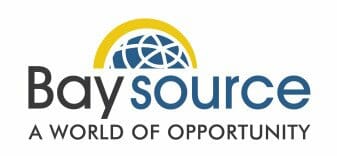As global trade conditions tighten and headlines warn of tariff hikes, shrinking shipping volumes, and policy reversals, it’s tempting for manufacturers to hit pause—on new sourcing initiatives, on supplier onboarding, on capacity planning. But slowing down doesn’t have to mean shutting down. For forward-thinking companies, this kind of global deceleration is a strategic opening: a chance to rethink their operations, reset expectations with partners, and lay the groundwork for smarter, more scalable supply chains. Many are also using this time to leverage ERP data to gain better transparency into component costs and tariff exposure, allowing smarter sourcing decisions. This moment isn’t a crisis—it’s an opportunity.
- Pressure’s Off—Which Means Flexibility Is On
When demand is spiking and supplier capacity is booked out for months, there’s little room to negotiate or reimagine. In today’s climate, lead times are loosening, production queues are shrinking, and suppliers are more open to exploratory conversations than they’ve been in years. We’ve seen this firsthand with clients in consumer electronics who are using this window to test alternate components without the pressure of production deadlines. One manufacturer that previously couldn’t get supplier attention for a cost-down initiative is now implementing changes that will save 12% on unit costs when volumes pick up again. Others are exploring alternate shipping routes—such as direct shipments to non-U.S. markets from Asia—as a way to offset tariff exposure and maintain customer service levels. This gives manufacturers a chance to test new vendors in a lower-risk environment, restructure MOQs and shipping schedules to reflect new market realities, and conduct cost modeling exercises that would’ve been unfeasible in a high-pressure cycle. Think of it as the calm in which to tune your engine—not just wait for the green light. - The BOM Clean-Up You’ve Been Putting Off? Now’s the Time
Bill of Materials (BOM) reviews often fall by the wayside when teams are sprinting to keep up with demand. But a slowdown offers a rare window to dig in—to rationalize SKUs, reevaluate component sourcing, and audit long-standing supplier dependencies that may no longer make sense. Using ERP systems to analyze component-level data, some brands are finding hidden opportunities to swap materials or adjust designs in ways that reduce tariff costs without compromising quality. Consider a mid-sized industrial equipment manufacturer that used their 2020 slowdown to eliminate 15% of their component SKUs through standardization. When demand rebounded, they weren’t just ready—they were more efficient, with fewer inventory headaches and simplified production planning. This is also the time to align engineering and procurement teams more closely, closing feedback loops that can reduce over-engineering and improve material efficiency. What can be gained: reduced unit costs from rationalized sourcing, better production scalability through simplified designs, and fewer delays due to over-customized or single-sourced components. - Suppliers Are Willing to Talk—Use That Access Wisely
During demand peaks, it can be difficult to get quality time with suppliers unless you’re their biggest client. Right now, though, those same suppliers may be eager to deepen relationships, co-develop new processes, or even revisit contract terms to ensure future loyalty. Chinese factory owners, in particular, are increasingly collaborative under the current tariff pressures, often brainstorming with buyers to explore creative ways to reduce landed costs—whether through packaging adjustments, shipping alternatives, or smarter volume forecasting. Manufacturers who take advantage of this moment to strengthen their partnerships—not just place orders—will be in a better position when demand rebounds. Key questions to explore with your partners: Can they support new product variants in 2025–2026? Are there opportunities to align on lead time reductions or shared cost savings? What technologies or capabilities are they investing in that you can leverage? - This Is a Smarter Time to Scale—Quietly
One of the biggest risks during growth periods is scaling reactively. A lot of poor manufacturing decisions are made in panic mode—rushed supplier approvals, high-cost emergency air freight, or inflexible tooling setups that can’t adapt as business needs shift. But during a slowdown, you can think more clearly and invest more wisely. Establish dual-source capability without rushing. Pilot alternate manufacturing regions without overextending. Train internal teams on new production workflows or QA processes. Smart manufacturers know that growth happens in the planning, not just the surge.
Conclusion: Don’t Confuse Slowdown with Stagnation
Every downturn, deceleration, or trade disruption brings a familiar choice: wait and react, or pause and prepare. The current slowdown is no different. It’s not a sign to retreat—it’s a window to retool. The companies that emerge strongest from this period won’t be the ones that waited it out. They’ll be the ones who used the time to re-strategize with purpose and precision, laying the groundwork for more resilient and competitive operations when the market inevitably turns. And when that happens—when demand spikes and everyone else is scrambling—they’ll be the ones ready to capture it.
Contact Us







Follow Us